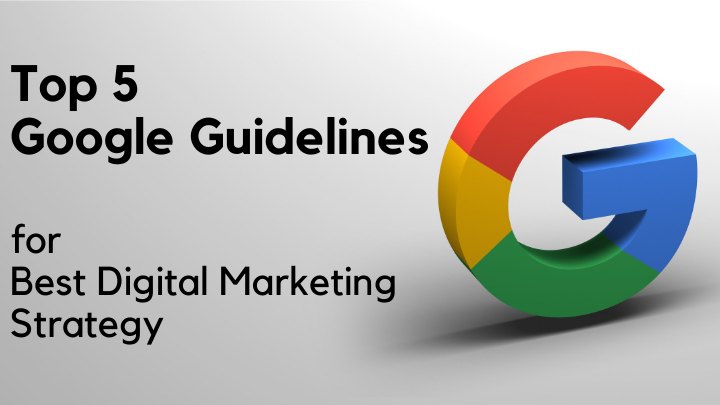
In our tech-driven world, digital marketing has become essential for businesses of all sizes. While traditional promotion still has its place, brands need to meet customers where they are – and that means going online.
Online marketing can allow you to reach new audiences and build your brand’s perception in an effective and affordable way. However, you do need to give careful consideration to the way in which you promote your business on the web. The way we use the internet has evolved rapidly over the years, which means that search engines have had to keep up with the latest consumer trends.
Google’s top priority is to deliver relevant results to web users. As such, Google has established some guidelines for site owners to follow to ensure they serve the needs of visitors. When you follow these guidelines, you’ll be more likely to appear prominently in search results. But if you ignore these best practices, you could risk being penalized. Penalization can result in poor rankings or total exclusion from search results, which can lead to a major decrease in traffic and sales. Clearly, it’s in your best interest to follow Google’s best practices when marketing your business online.
Not sure where to start? Take a look at the tips below and follow Google guidelines for best Digital Marketing Strategy.
1. Improve website performance and user experience
You might not realize it, but web design has a profound impact on marketing performance. It won’t matter how much work you put into promoting your brand if your site provides a poor experience for web visitors.
Google wants to reward sites that keep the user experience in mind. That means your site should be accessible and responsive across all devices. It should also be fast, secure, and easy to navigate. Many of Google’s ranking signals (which are part of how Google calculates website rankings in search results) revolve around website performance and overall user experience. If your site is easy to use and gives a positive impression, your brand will be seen as more trustworthy and your content will be much more useful.
Before you start marketing your products or services, you should check to ensure your site doesn’t create barriers for your target audience. At a bare minimum, you’ll want to run some site speed and mobile performance tests, fix navigation errors, and invest in security measures. Doing so can allow you to address issues early on and eliminate wasted resources later.
2. Create unique and valuable content
Although you might think that your products and services are the real stand-outs for your brand, the truth is that visitors care a lot less about your offerings than how you can improve their lives.
One of the easiest ways to demonstrate that is through the content you create. By developing and publishing website content that provides solutions for visitors, you’ll make a noticeable impact on their lives and will position yourself as a leader in your industry.
You may have heard the expression, “content is king.” But not all content is created equal. Google specifies that website content should be well-written, relevant, and useful. It should also be original – meaning it should not be copied from another source or elsewhere on your site. Your content should seek to help people who visit your site, whether or not those visitors actually become customers. Write for human users, rather than search engines, and make this content stand out from similar content that exists in your niche.
Often, longer posts are better than short ones (as thin content provides less value). That said, you’ll want to ensure that longer pieces of content provide value throughout!

3. Optimize titles, meta descriptions, and images
On-site optimization can help search engines understand what your site is about and what you have to offer. There are many different ways to optimize a website, but the use of keywords remains one of the most important.
You’ll want to use relevant keywords in your page title tags and meta descriptions to provide valuable context. Be careful not to use too many keywords! Titles should not exceed 70 characters, while meta descriptions should be limited to 160 characters maximum. It is one of the most valuable Google guidelines for best Digital Marketing Strategy.
You should also optimize the images on your site! Compressing large images can help with site speed, while providing alt text for images can help search engines “read” the visuals on your site. As with titles and descriptions, avoid the overuse of keywords to follow Google’s best practices.
4. Steer clear of Black Hat SEO techniques
We mentioned above that keyword overuse – sometimes referred to as “keyword stuffing” – is something you should avoid. Keyword stuffing is just one example of black hat SEO.
In the early days of the world wide web, site owners didn’t have to do much to appear in search results – and the steps they did take at the time are often seen as underhanded today. Black hat SEO techniques are used in an attempt to manipulate search engines into doling out better rankings than might actually be warranted. Other examples of black hat SEO tactics are cloaking and doorway pages, the use of irrelevant keywords, hidden text and links, comment spam, duplicate content, and negative SEO attacks.
All of these techniques (and many others) directly go against Google’s best practices. Make sure to familiarize yourself with Google’s Webmaster Guidelines to avoid unknowingly making these mistakes and risking penalties as a result.
5. Build backlinks naturally
While you’ll want to optimize your website, you’ll also need to supplement your efforts with off-site marketing work to get the most out of your strategy. One of the best ways to ensure your site is seen as authoritative in the eyes of Google is to acquire high-quality backlinks to your site from other sources.
These backlinks are seen as endorsements from other sites on the web. If they give your site their seal of approval, your site will be seen as more valuable and relevant by search engines. That, in turn, can improve your rankings and have positive effects on your site traffic. In some cases, you might acquire some backlinks naturally. If you create content or build mutually beneficial relationships with other site owners, you might receive a backlink to your site without much additional effort.
You can also obtain backlinks through guest posting, interviews, or industry round-ups. You can also find broken hyperlinks (leading to 404 error pages) and suggest a similar resource on your own site for replacement.
Some business owners may try to buy backlinks for SEO purposes. It should be noted that this practice goes against Google’s guidelines, unless the link is attributed as a sponsored or no-follow link. While this technique can sometimes save time, it should be used only in specific circumstances to avoid any potential penalty.
You’ll also want to stay away from building backlinks through comment spam or link farms. These used to be effective techniques, but they will no longer yield the results you’re looking for. The links are typically unnatural and come from low-quality sources, so these techniques aren’t worth the effort.
Always follow for best Digital Marketing Strategy
It’s not always easy to know what to do – or not to do – when you’re optimizing your website for search engines. Google doesn’t make everything crystal clear, but you’ll want to follow their SEO best practices as best as you can. This can maximize your rankings progress while minimizing risk.
